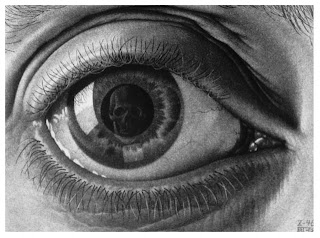Picasso would sketch the outlines of his subject and leave much of his page bare, but yet did not skrimp on the mood he was trying to express or the character of his subject. He had a simple but ballsy style, unlike a lot of great artists who tended to stick firm to the teachings of traditional drawing technique.
Unhappy at architecture college, M.C.Escher gave up his parents' dream and took on graphic design instead. And thank goodness he did. He shortly became an artist that grew extremely adept at his game. "I believe that producing pictures, as I do, is almost solely a question of wanting so very much to do it well." Unlike the free style of Picasso, Escher's style was almost impossibly accurate, not a single detail was forgotten. He used this amazing skill of observation to design his own bizarre and mind-boggling fantasies.
Clearly an intelligent mathematician as well as graphic designer; the proof is in the pudding. He created some 400 lithographs, woodcuts or engravings in his lifetime as well as thousands of drawings. I remember being dumbstruck as a child when I first came upon some of his work, but these famous images are the kind that do not in any way become any less awe-inspiring as you reach adulthood. The closer you look, the more amazed you are.




No comments:
Post a Comment